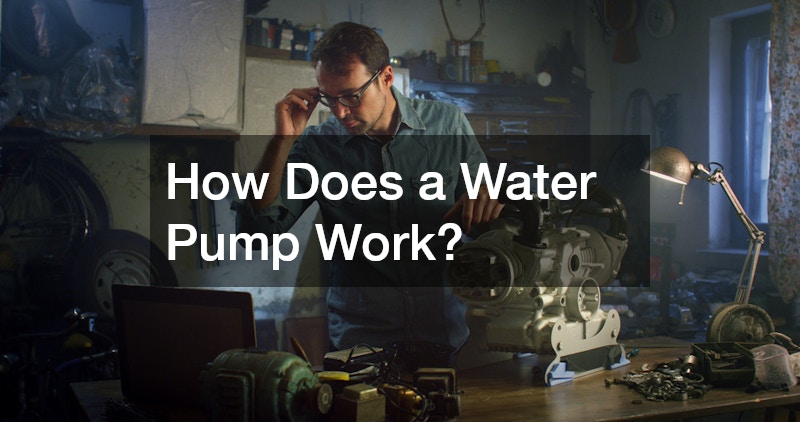
Water pumps are essential devices used in various applications, ranging from household water supply to industrial processes. Their primary function is to move water from one location to another efficiently. Understanding how a water pump works can help individuals and businesses make informed decisions regarding their water management systems.
Video Source
In this article, we will explore the different types of water pumps, their components, and the fundamental principles that make them operate effectively.
Water pumps come in various types, each designed for specific applications and environments. The most common types include centrifugal pumps, positive displacement pumps, submersible pumps, and jet pumps. Centrifugal pumps are widely used due to their efficiency in moving large volumes of water quickly by converting rotational energy into the kinetic energy of the fluid. On the other hand, positive displacement pumps are designed to move a specific amount of fluid with each cycle, making them ideal for precise applications. Submersible pumps operate underwater, making them perfect for deep well applications and sewage pumping systems.
The choice of water pump depends on factors such as the intended use, the required flow rate, and the pressure needed to transport the water. For example, residential systems may utilize a smaller, lower-pressure centrifugal pump, while industrial applications might require larger, more powerful pumps that can handle higher volumes. Jet pumps are commonly used in well water systems, where the pump draws water from the ground through suction. Understanding the nuances between these types is crucial for selecting the right water pump for a specific task.
Moreover, each type of water pump has its advantages and disadvantages. For instance, centrifugal pumps are generally less expensive and simpler to maintain, but they may not perform well with viscous fluids or when high pressure is required. Positive displacement pumps, while more complex, can handle thicker liquids and provide a consistent flow rate even under varying conditions. As we delve deeper into the mechanics of how a water pump works, recognizing these distinctions will enhance your understanding of their functionalities and applications.
A water pump consists of several integral components that work together to ensure effective operation. At its core, water pumps include an impeller, a volute (or casing), and a motor or engine. The impeller is a rotating component that moves the water by converting mechanical energy into hydraulic energy. The volute, on the other hand, helps direct the flow of water from the impeller into the discharge pipe, allowing for efficient transfer. Lastly, the motor powers the impeller, providing the necessary force to move the water.
Additionally, some water pumps may include other features such as check valves, pressure gauges, and filters to enhance their functionality and protect against damage. Check valves prevent backflow, ensuring that the water moves in one direction, while pressure gauges help monitor the pump's performance. Filters can trap debris and contaminants, reducing wear and tear on the pump components. Understanding these components is essential for operating and maintaining a water pump effectively.
Each of these components serves a critical role in the overall functioning of a water pump. A malfunction in any part can lead to decreased efficiency or complete failure of the pump. Regular maintenance, including checking and replacing worn or damaged parts, is necessary to prolong the lifespan of the pump and maintain optimal performance. By keeping the components in good condition, users can ensure their water pumps operate smoothly and effectively for years to come.
Water pumps operate based on basic principles of fluid dynamics, relying on creating pressure differences to move water. In centrifugal pumps, the impeller spins rapidly, creating a low-pressure area at its center. This pressure difference draws the water into the pump through the inlet, where it is then forced outward by the impeller's action. As the water moves through the volute, it gains velocity and pressure, which allows it to exit through the discharge pipe effectively.
In contrast, positive displacement pumps work by trapping a fixed amount of water within a chamber and then forcing it out through the discharge using mechanical means, such as a piston or diaphragm. This method is particularly effective for tasks requiring consistent flow rates, as the pump displaces a specific amount of liquid with each cycle. Understanding the differences in operation is vital for selecting the right pump type based on the application and required performance.
